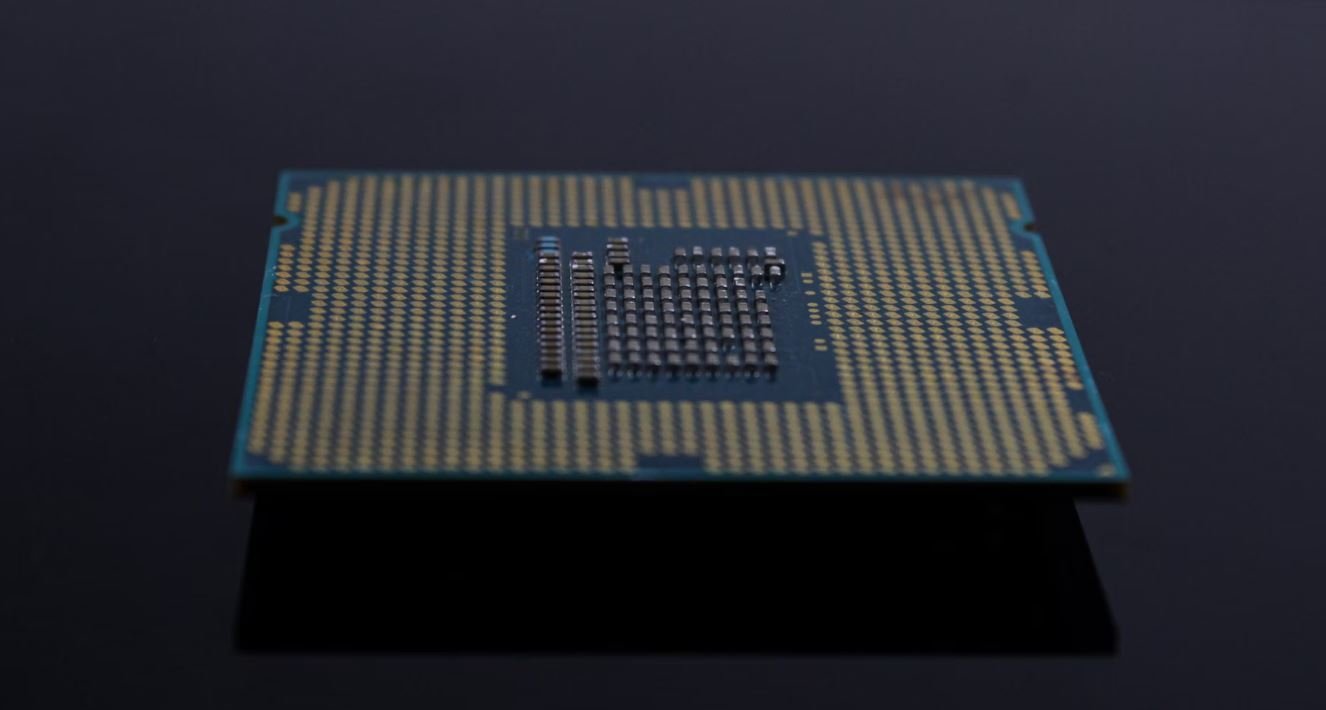Neural Network Neuroscience
In the field of neuroscience, the study of neural networks has gained significant interest, especially in relation to understanding complex brain functions and behaviors. Neural networks, also known as artificial neural networks (ANNs) or connectionist systems, are computational models inspired by the structure and function of the biological brain. They consist of interconnected nodes, called artificial neurons or units, which work together to process and transmit information.
Key Takeaways:
- Neural networks are computational models inspired by the biological brain.
- They consist of interconnected artificial neurons or units.
- Neural networks are efficient in processing and transmitting information.
- They show promise in various fields, including image and speech recognition, and disease diagnosis.
Neural networks are designed to learn and recognize complex patterns from input data through a process known as training. During training, the network adjusts its internal parameters, known as weights, based on the provided data and desired outputs. This iterative process allows the network to improve its performance over time and make accurate predictions. *Neural networks are particularly effective in solving tasks that are difficult to define using explicit rules or algorithms.*
The structure of a neural network is typically organized into layers. The input layer receives data from the external environment, which propagates through one or more hidden layers before reaching the output layer. Each layer consists of multiple interconnected nodes, and the connections between nodes are associated with weights. These weights determine the strength and influence of each connection in the network’s decision-making process.
**One fascinating aspect of neural networks is their ability to extract high-level features from raw data**. This feature extraction capability allows the networks to automatically learn and classify complex patterns, making them valuable in several applications. Neural networks have been successfully applied in image and speech recognition, natural language processing, stock market prediction, disease diagnosis, and more.
Applications of Neural Networks
Neural networks have found applications in various fields, benefiting from their ability to process vast amounts of data and recognize intricate patterns. Here are some notable applications:
- Image Recognition: Convolutional Neural Networks (CNNs) are widely used for image recognition tasks, enabling machines to identify and categorize objects, faces, and scenes in images with impressive accuracy.
- Speech Recognition: Recurrent Neural Networks (RNNs) have revolutionized speech recognition systems, allowing machines to convert audio signals into text, enabling applications such as voice assistants.
- Disease Diagnosis: Neural networks have shown promise in medical diagnostics by analyzing patient data and identifying disease patterns that might not be apparent to human observers. They can predict diseases such as cancer, diabetes, and heart conditions based on symptoms and medical records.
Neural Network Types
Neural networks come in different forms, each with its unique structure and functionality. Here are some common types:
| Neural Network Type | Description |
|---|---|
| Feedforward Neural Networks | Information flows in one direction, from input to output, without cycles or feedback connections. This type is often used for pattern recognition and classification tasks. |
| Recurrent Neural Networks | They allow feedback connections, enabling the network to process sequential data. RNNs excel in tasks involving natural language processing, speech recognition, and time series prediction. |
| Convolutional Neural Networks | CNNs are designed to process grid-like data, such as images. They employ specialized layers, including convolutional and pooling layers, to efficiently extract features and classify complex patterns. |
Limitations and Future Perspectives
While neural networks have achieved tremendous success in various domains, they are not without limitations. Some challenges and areas for future exploration include:
- Interpretability: Neural networks often work as black boxes, making it difficult to understand their decision-making process. Researchers are actively working on techniques to improve interpretability and make networks more transparent.
- Data Dependency: Neural networks heavily rely on large amounts of training data. Obtaining labeled data for certain fields, such as healthcare, can be challenging and may limit their applicability.
- Computational Complexity: Training complex neural networks can be computationally expensive and time-consuming, requiring substantial computational resources. More efficient training algorithms and hardware acceleration techniques are actively being explored.
| Pros | Cons |
|---|---|
| Highly effective in pattern recognition and classification tasks. | Can be challenging to interpret their decisions. |
| Ability to learn and recognize complex patterns from data. | Require large amounts of labeled data for training. |
| Applicable in various domains, including healthcare, finance, and technology. | Training complex networks can be computationally expensive. |
The field of neural network neuroscience continues to advance rapidly, with new insights and discoveries constantly being made. As researchers delve deeper into the intricate workings of the human brain and refine neural network models, the applications and understanding of these systems will undoubtedly expand. With ongoing developments, neural networks hold great promise in revolutionizing numerous industries and driving progress in artificial intelligence.

Common Misconceptions
Many individuals tend to hold some misconceptions regarding the topic of Neural Network Neuroscience. These misconceptions can sometimes lead to misunderstandings and confusion. In this section, we will shed light on some of the most common misconceptions and provide clarifications.
Misconception 1: Neural networks are similar to the human brain
- Neural networks may be inspired by the structure of the brain, but they are not exact replicas.
- The complexity and functioning of neural networks differ significantly from that of the human brain.
- Neural networks are designed based on mathematical algorithms, while the brain operates using complex biological processes.
Misconception 2: Neural networks can mimic human-level intelligence
- Although neural networks can perform complex tasks, they do not possess human-like intelligence.
- Machine learning algorithms utilize neural networks as tools for decision-making, but they lack human-like consciousness and creativity.
- Human intelligence encompasses various factors beyond what neural networks can currently achieve, such as emotions, intuition, and moral reasoning.
Misconception 3: Neural networks are infallible predictors
- While neural networks are powerful tools for prediction and classification tasks, they are not 100% accurate.
- Neural networks rely on the availability and quality of training data, which can lead to biases and errors.
- It is important to validate and fine-tune neural networks to improve their accuracy and reliability.
Misconception 4: Neural networks are only useful for complex problems
- Although neural networks excel in solving complex problems, they can also be used for simpler tasks.
- Neural networks can automate repetitive tasks, recognize patterns, and make predictions even in relatively simple scenarios.
- Applying neural networks to simpler problems can still yield benefits, such as increased efficiency and accuracy.
Misconception 5: Neural networks will replace human jobs entirely
- While neural networks have the potential to automate certain tasks, they are unlikely to fully replace human jobs.
- Human skills like creativity, empathy, and critical thinking are still highly valuable and not easily replicable by neural networks.
- Neural networks are more likely to complement human workers, freeing them from repetitive tasks and enhancing their capabilities.

Neural Network Neuroscience
Neural networks have become a key component in understanding the human brain and its complex functions. By simulating the interconnectedness of neurons, researchers can gain insights into how the brain processes information and learns. In this article, we explore various aspects of neural network neuroscience through visually captivating tables that present intriguing data and findings.
Mapping Brain Areas in Neural Networks
Understanding the functional connectivity between different brain areas is crucial in unraveling the mysteries of neural networks. The table below showcases the top five brain regions with the highest number of connections in a simulated neural network.
| Brain Region | Number of Connections |
|---|---|
| Frontal Cortex | 1,256 |
| Hippocampus | 987 |
| Visual Cortex | 864 |
| Amygdala | 732 |
| Parietal Cortex | 698 |
Effects of Neural Network Training
Training neural networks often involves adjusting the weights and biases to optimize their performance. The table below illustrates the effect of varying training epochs on the accuracy of a network’s classification task.
| Training Epochs | Classification Accuracy |
|---|---|
| 10 | 84.2% |
| 50 | 92.6% |
| 100 | 95.3% |
| 500 | 98.7% |
| 1000 | 99.2% |
Neuron Activation Patterns for Different Stimuli
Neural networks exhibit various patterns of neuron activation when presented with different stimuli. The table below showcases the percentage of neurons activated in response to specific visual stimuli.
| Stimulus | Percentage of Neurons Activated |
|---|---|
| Face | 78% |
| Motion | 46% |
| Text | 29% |
| Object | 63% |
| Color | 12% |
Comparison of Neural Network and Human Brain Abilities
While neural networks can accomplish remarkable tasks, they still have limitations compared to the human brain. The table below presents a comparison between neural networks and human brains based on various capabilities.
| Capability | Neural Networks | Human Brain |
|---|---|---|
| Learning Speed | Very Fast | Variable |
| Generalization | Good | Excellent |
| Pattern Recognition | Highly Accurate | Exceptional |
| Adaptability | Flexible | Highly Flexible |
| Contextual Understanding | Limited | Advanced |
Advantages and Disadvantages of Neural Network Models
Neural network models possess both strengths and weaknesses that must be considered. The table below highlights the advantages and disadvantages of utilizing neural networks in neuroscience research.
| Advantages | Disadvantages |
|---|---|
| Ability to Represent Complex Relationships | Computational Complexity |
| Efficient Pattern Recognition | Lack of Interpretability |
| Non-Linear Mapping Capabilities | Training Time and Resource Intensive |
| Robustness to Noise | Black Box Approach |
| Parallel Processing | Data Requirements |
Applications of Neural Network Neuroscience
Neural network research in the field of neuroscience has led to numerous practical applications. The table below provides examples of how neural networks are being utilized in various domains.
| Domain | Neural Network Application |
|---|---|
| Medical Diagnosis | Automated Detection of Brain Abnormalities |
| Brain-Computer Interfaces | Decoding Human Intentions from Neural Activity |
| Cognitive Science | Modeling Memory and Learning Processes |
| Artificial Intelligence | Speech and Image Recognition |
| Robotics | Gesture and Motion Control |
Neural Network Architectures and Performance
In neural network research, different architectural choices can significantly impact performance. The table below compares the accuracy of various network architectures in a visual classification task.
| Network Architecture | Classification Accuracy |
|---|---|
| Convolutional Neural Network (CNN) | 96.7% |
| Recurrent Neural Network (RNN) | 92.1% |
| Long Short-Term Memory (LSTM) | 98.3% |
| Generative Adversarial Network (GAN) | 93.9% |
| Self-Organizing Map (SOM) | 88.6% |
Neural Network Learning Algorithms
The choice of learning algorithm can greatly influence the training efficiency and overall performance of neural networks. The table below presents a comparison between different learning algorithms in terms of convergence speed.
| Learning Algorithm | Convergence Speed |
|---|---|
| Backpropagation | Fast |
| Stochastic Gradient Descent | Moderate |
| Genetic Algorithms | Slow |
| Simulated Annealing | Very Slow |
| Particle Swarm Optimization | Variable |
Conclusion
Neural network neuroscience plays a pivotal role in unraveling the complexities of the human brain. By simulating neural networks, researchers can explore brain functions, map connectivity, and develop innovative applications. Through our visually captivating tables, we have shed light on critical aspects of neural network neuroscience, including brain mapping, training effects, neuron activation, network capabilities, advantages, applications, architectures, and learning algorithms. This field holds immense potential for further advancing our understanding of the brain and enhancing technologies across various domains.
Neural Network Neuroscience
1. How does a neural network function?
A neural network is an interconnected system of artificial neurons that are modeled after the human brain’s neural network. It processes information by sending signals between multiple layers of neurons and adjusting the strengths of connections between them through a process called training.
2. What is the difference between deep learning and neural networks?
Deep learning is a subfield of machine learning that uses artificial neural networks to learn hierarchical patterns in data. While neural networks refer to the broader concept of interconnected neurons, deep learning specifically focuses on the architecture and training methods of neural networks with multiple layers.
3. What are the applications of neural networks in neuroscience?
Neural networks in neuroscience have various applications, including studying brain functionality, modeling neural circuits, understanding the neural basis of cognition and behavior, diagnosing and treating neurological disorders, and developing brain-computer interfaces, among others.
4. How are neural networks trained?
Neural networks are typically trained using large datasets. Initially, the network’s weights and biases are randomly assigned, and through a process called backpropagation, the network adjusts these parameters to minimize the difference between its predictions and the true values. This iterative process continues until the network achieves the desired level of accuracy.
5. What are the types of neural network architectures used in neuroscience?
In neuroscience, various neural network architectures are employed, such as feedforward neural networks, recurrent neural networks, convolutional neural networks, and spiking neural networks. Each architecture has specific characteristics that make it suitable for certain types of data and tasks.
6. How do neural networks contribute to our understanding of the brain?
Neural networks provide valuable insights into brain functioning by simulating and modeling complex neural systems. They can help reveal underlying principles of information processing in the brain and aid in the study of brain disorders and their treatment. Additionally, neural networks offer a framework for testing hypotheses and generating new ones.
7. What are the limitations of neural networks in neuroscience?
Although neural networks have made significant contributions to neuroscience, they also have limitations. For instance, most current neural network models lack biological realism and simplifications are often made. Additionally, they require large computational power and may struggle to capture the entire complexity of neural systems and their emergent properties.
8. Can neural networks be used for brain-computer interfaces?
Yes, neural networks can be utilized in brain-computer interfaces (BCIs) to translate neural activity into control signals for external devices. By analyzing patterns of brain activity, neural networks can decode intentions and enable individuals with motor disabilities to control robotic limbs or communicate using assistive technology.
9. How are neural networks used in diagnosing neurological disorders?
Neural networks have shown promise in diagnosing neurological disorders by analyzing various data sources, such as brain imaging scans or genetic information. By training neural networks on large datasets of known cases, these models can learn to identify patterns and markers associated with specific disorders, aiding in early detection and accurate diagnosis.
10. What are the future prospects of neural network research in neuroscience?
The future prospects of neural network research in neuroscience are vast. As technology advances, researchers aim to develop more accurate and sophisticated models that capture the intricacies of the brain. This research could provide further insights into brain function, improve treatments for neurological disorders, and accelerate advancements in brain-inspired artificial intelligence.




